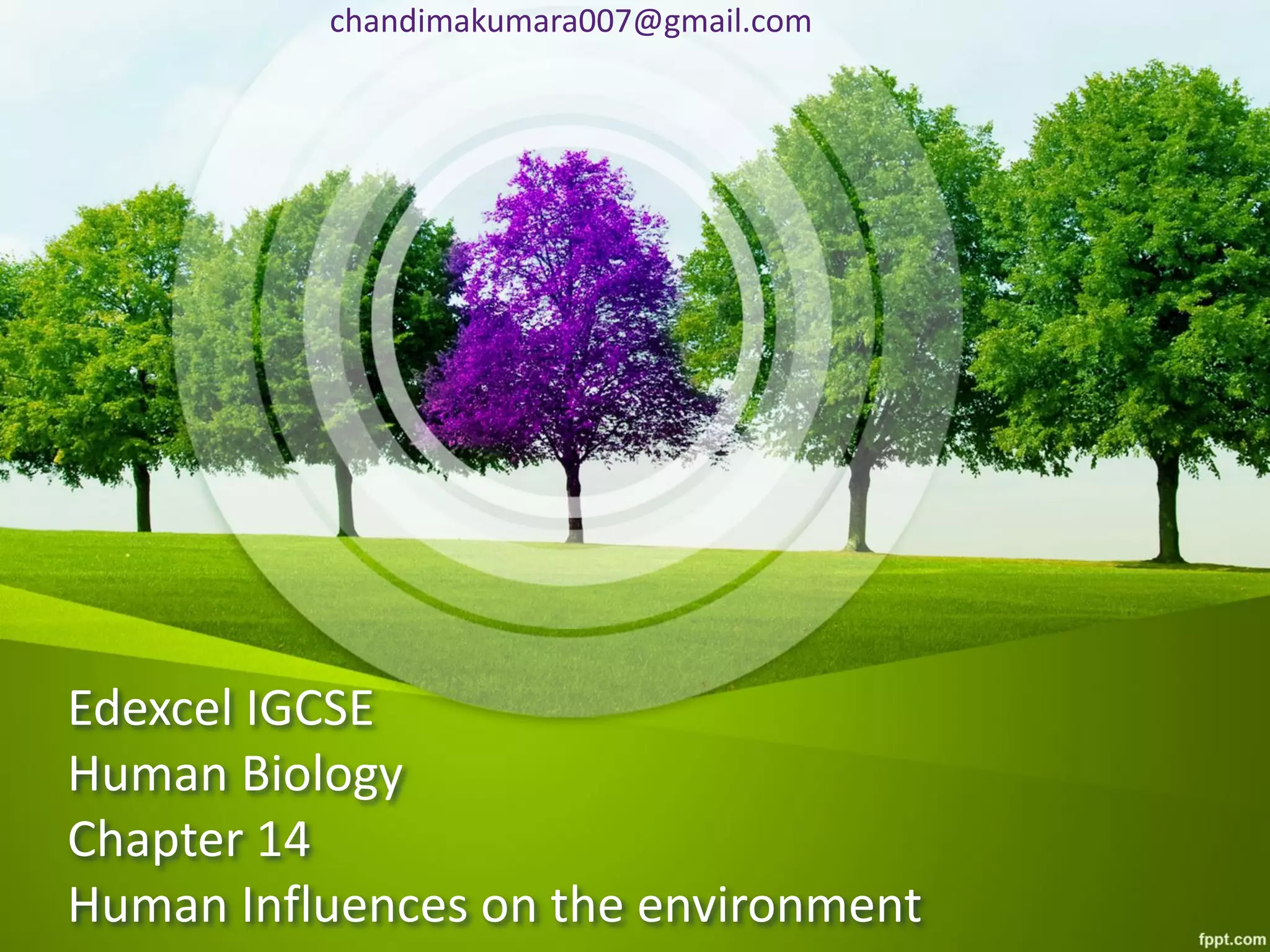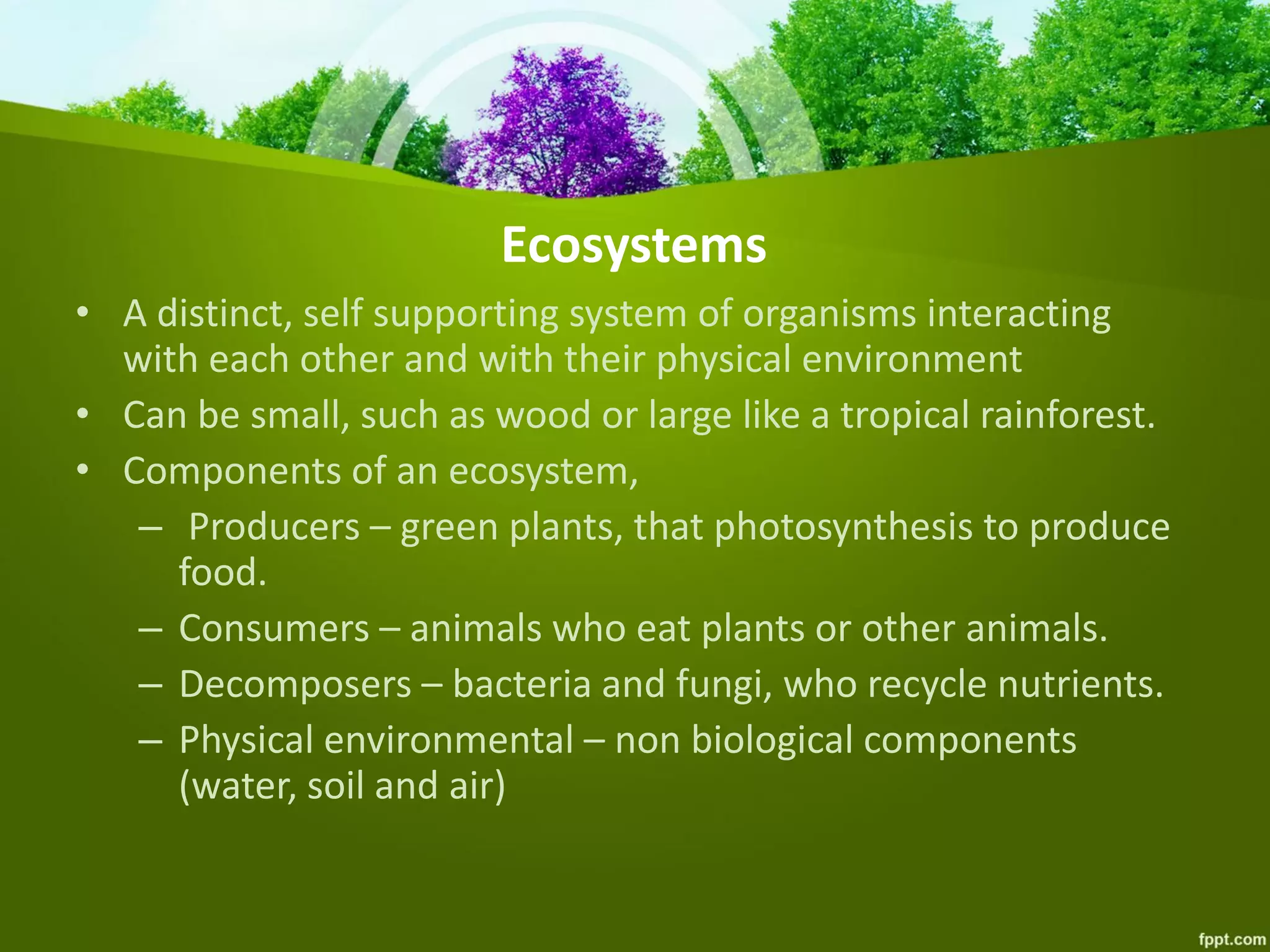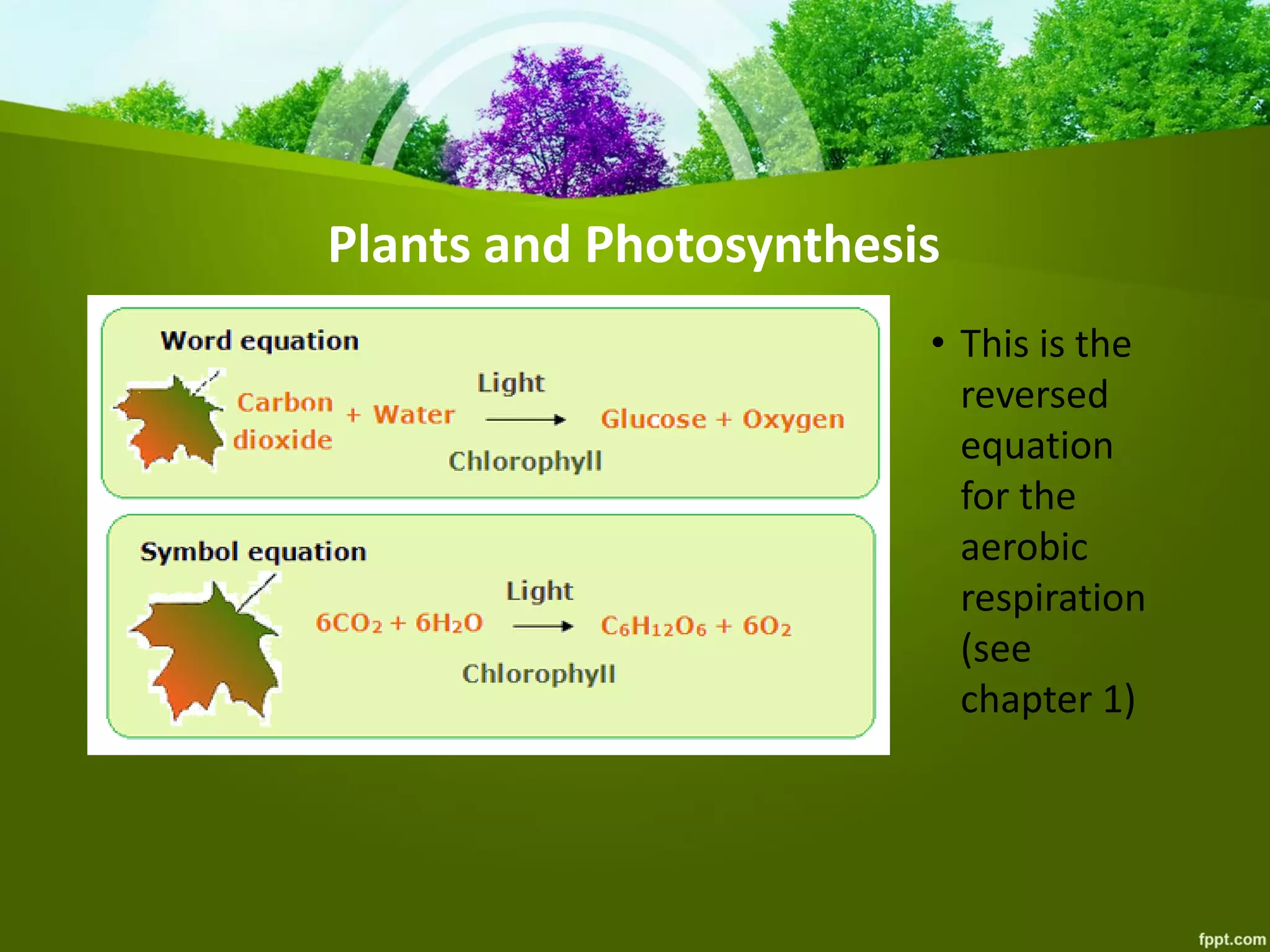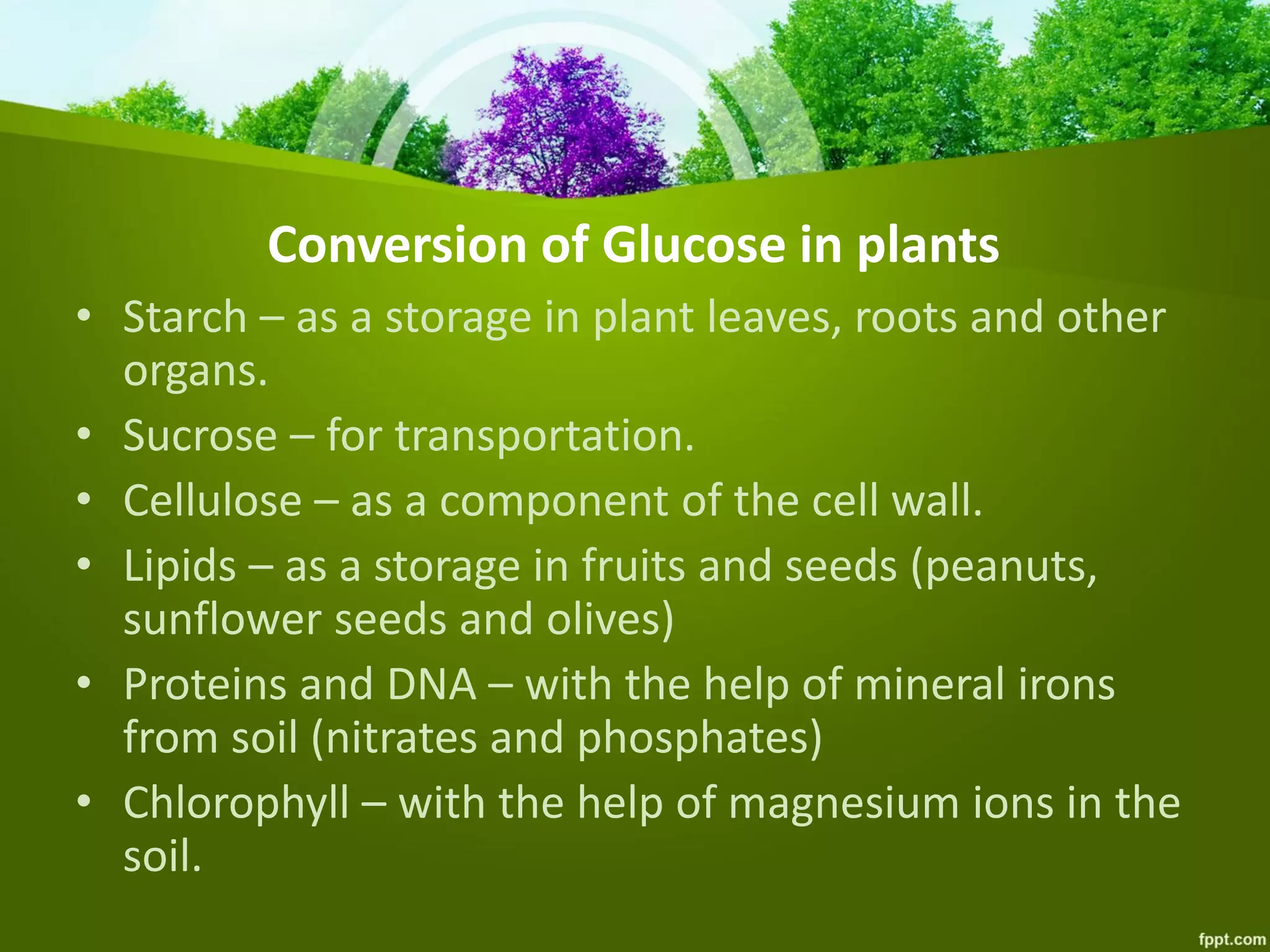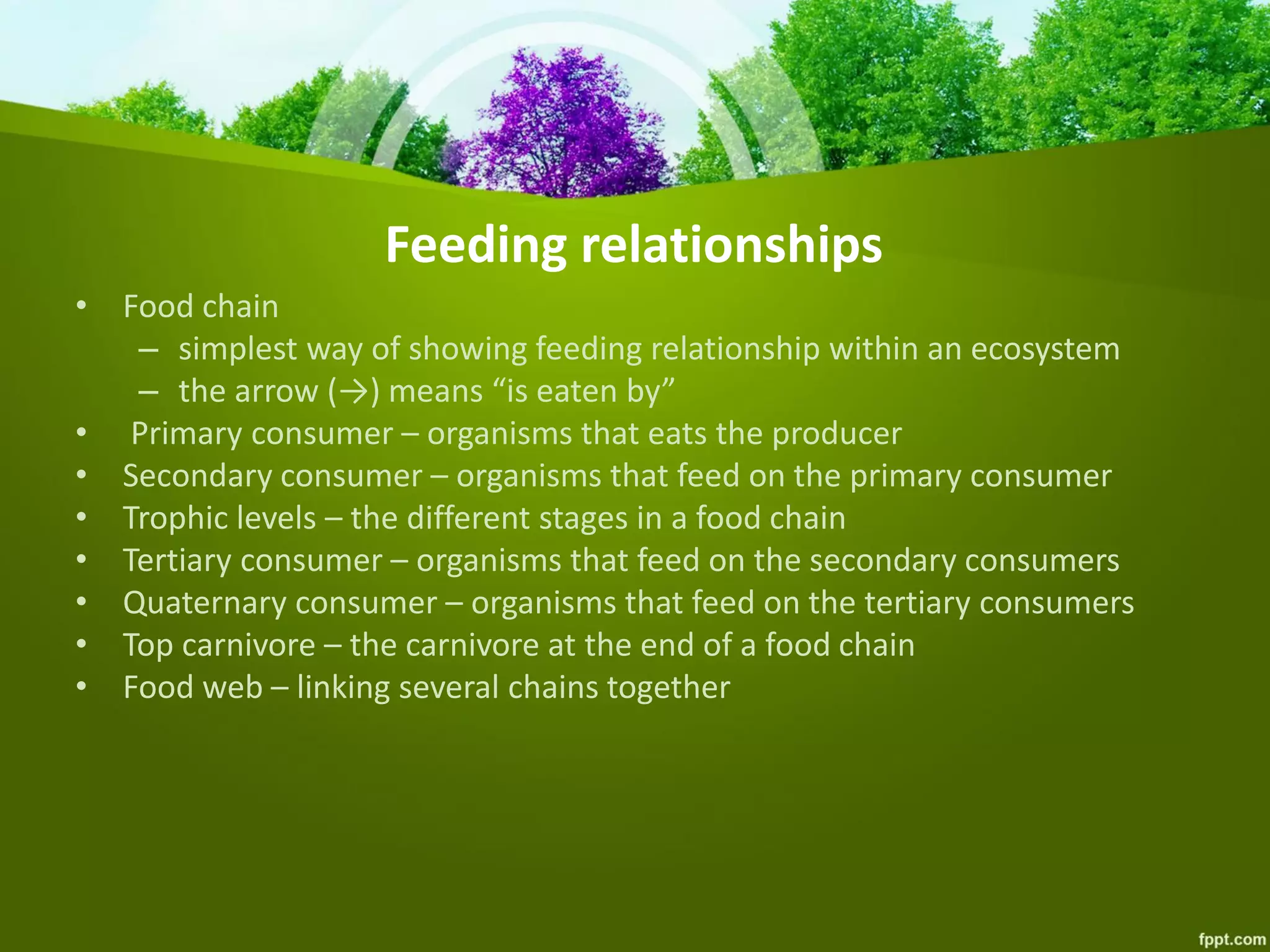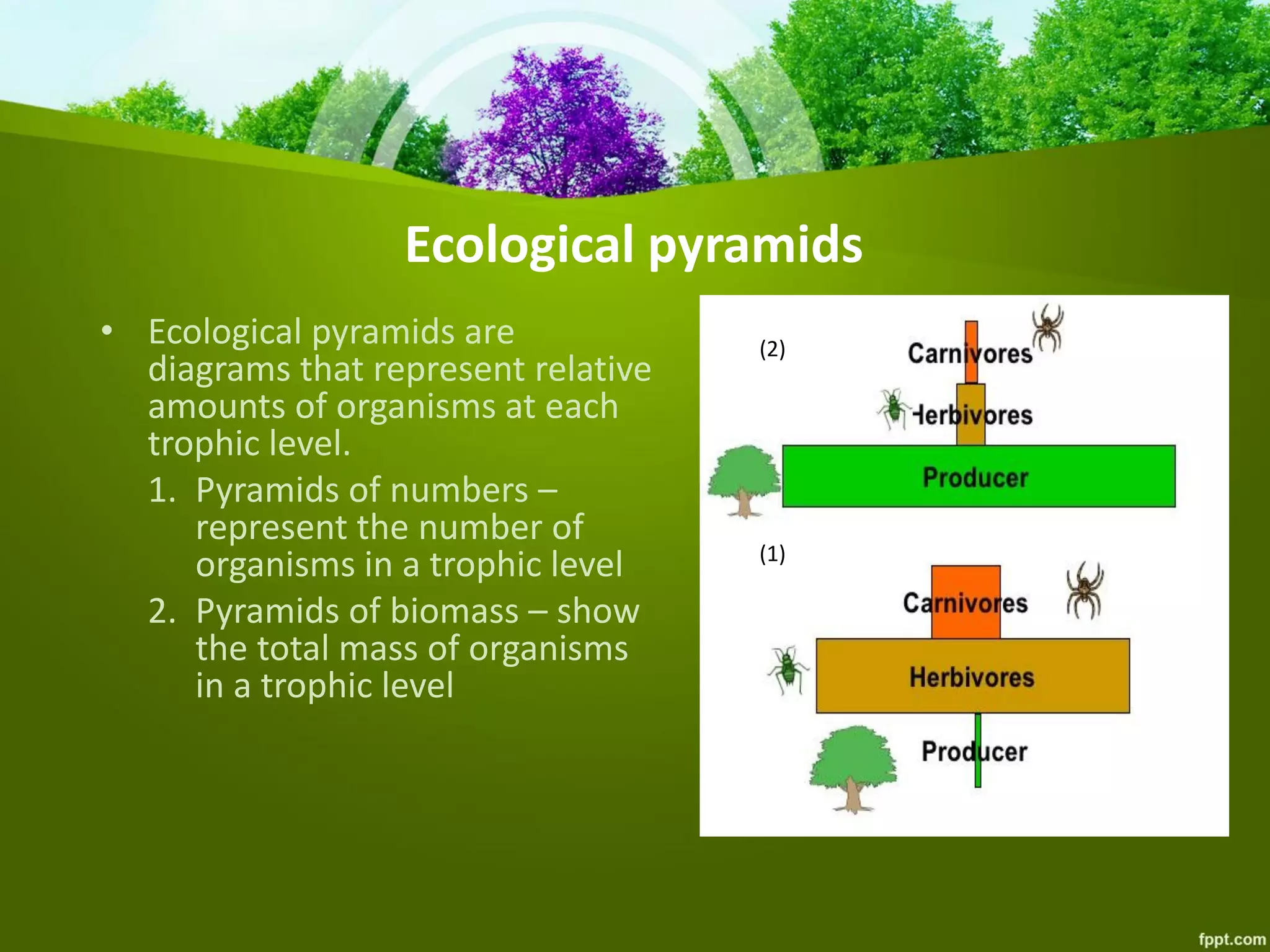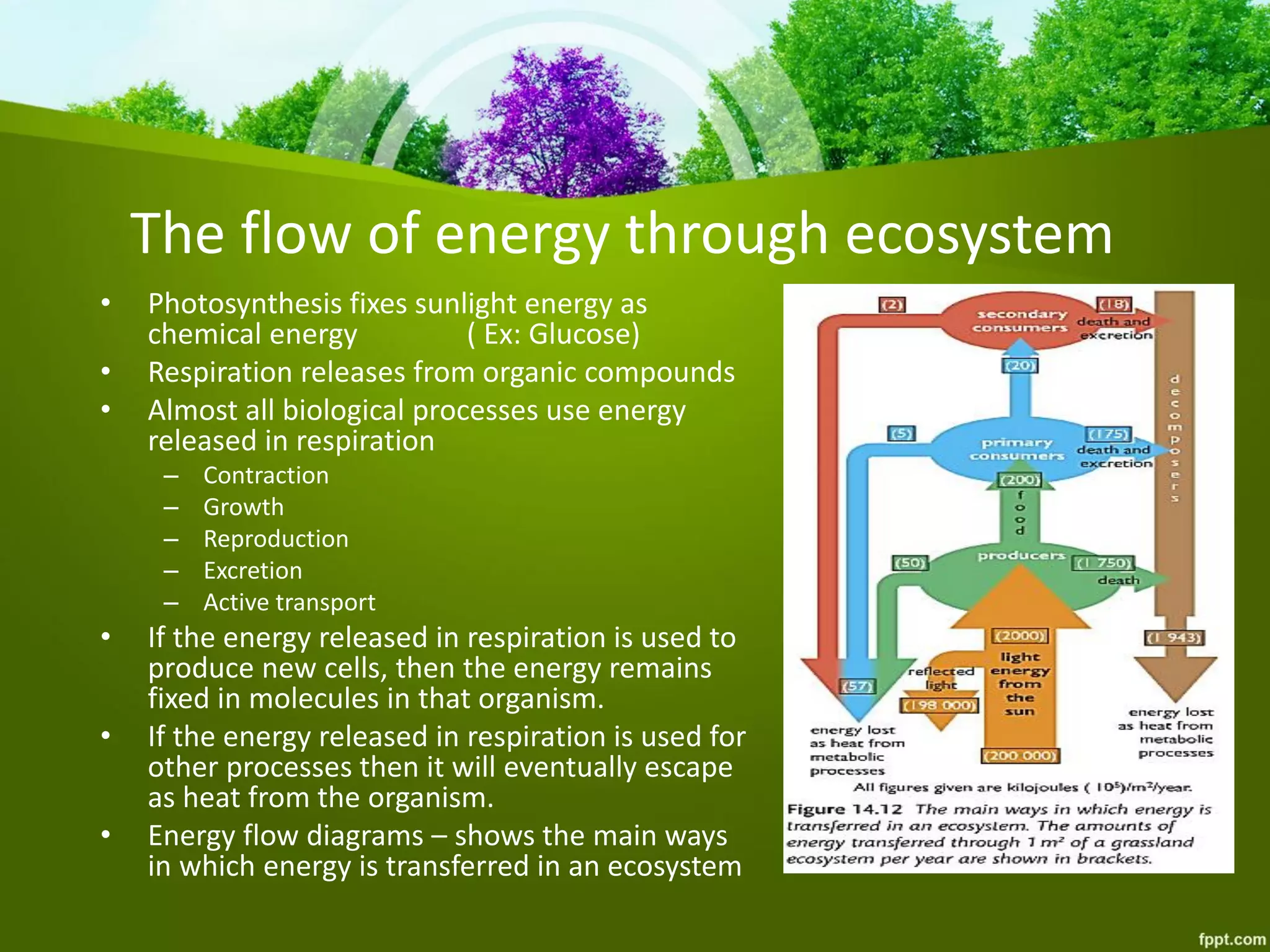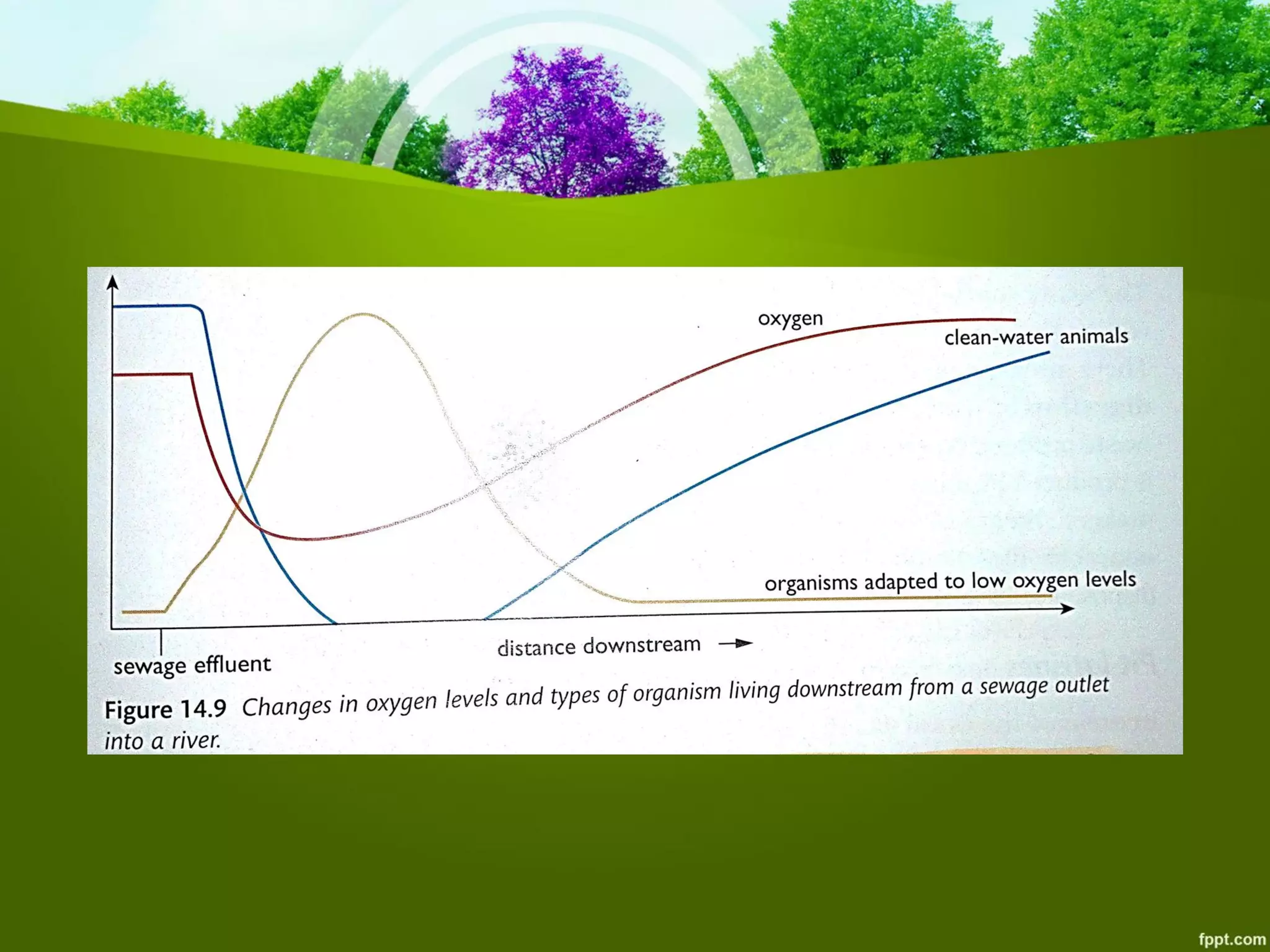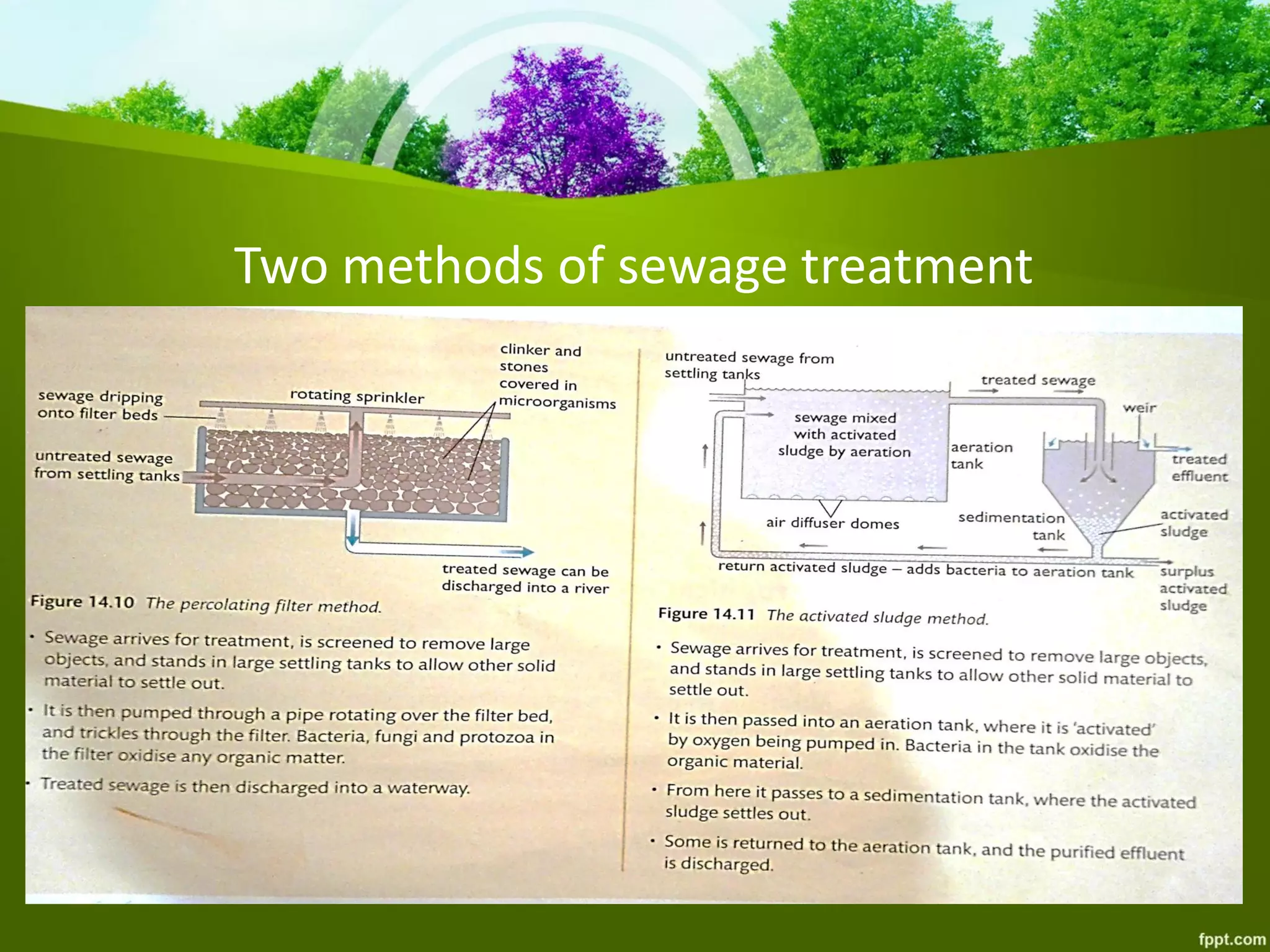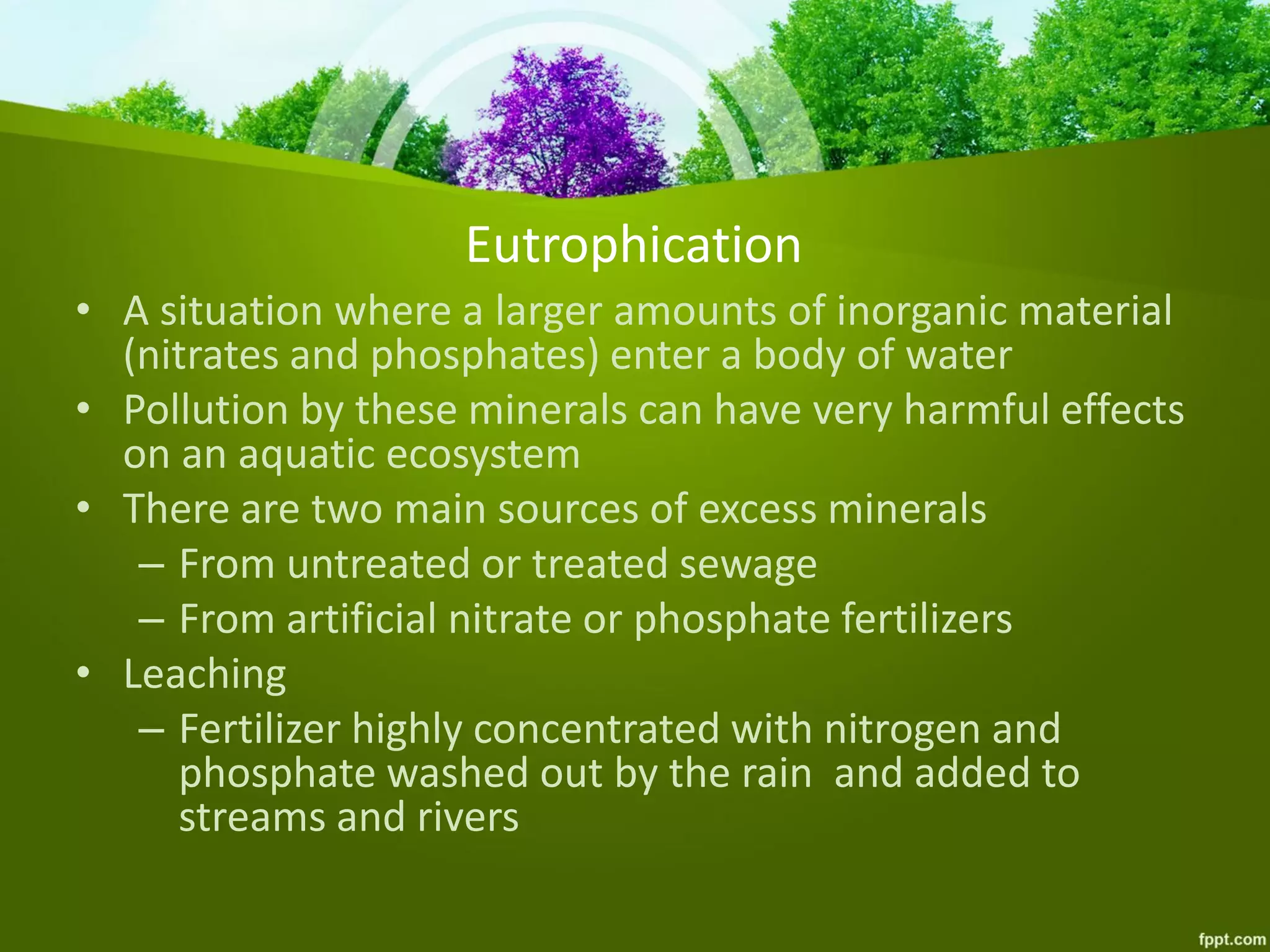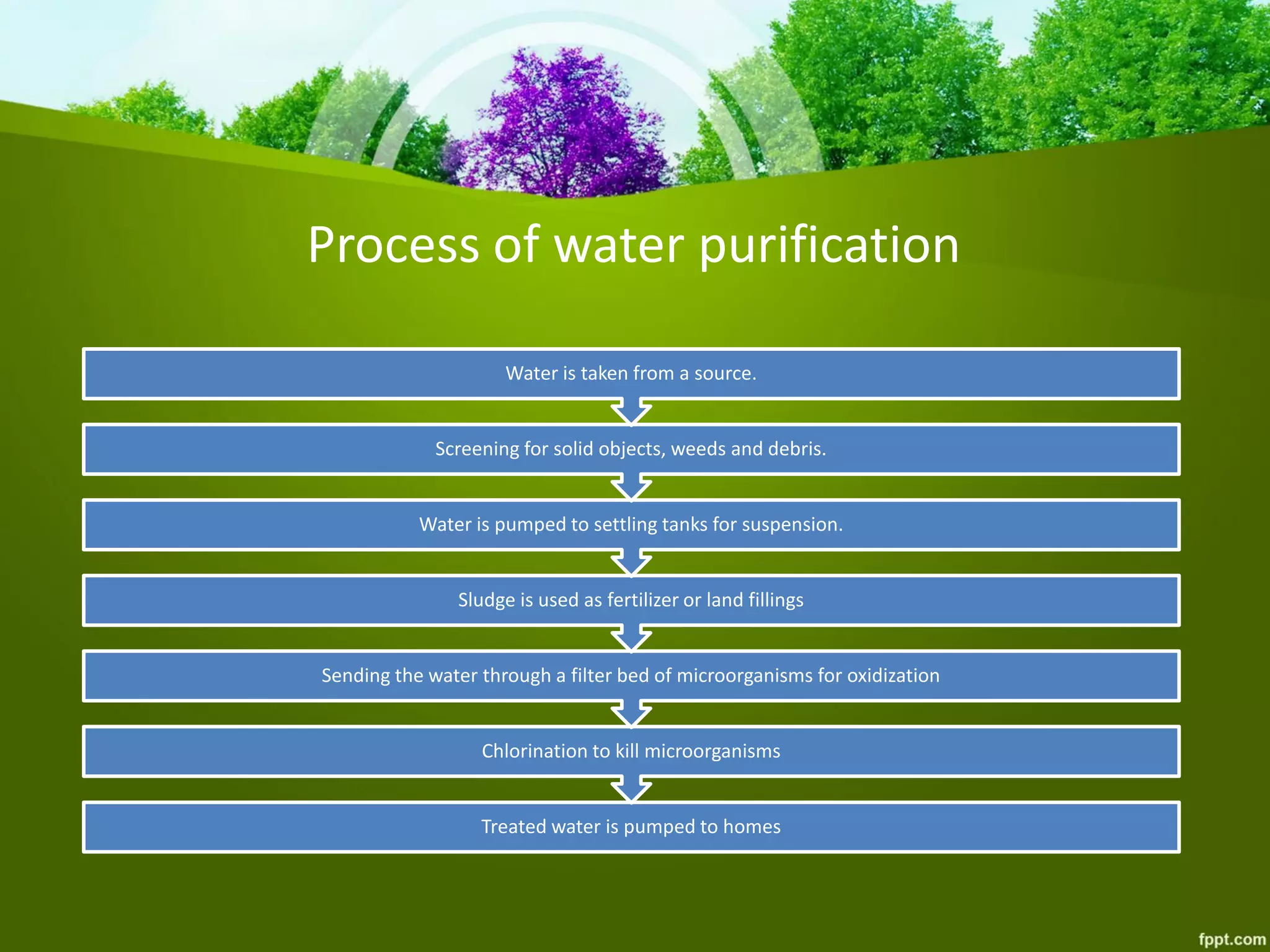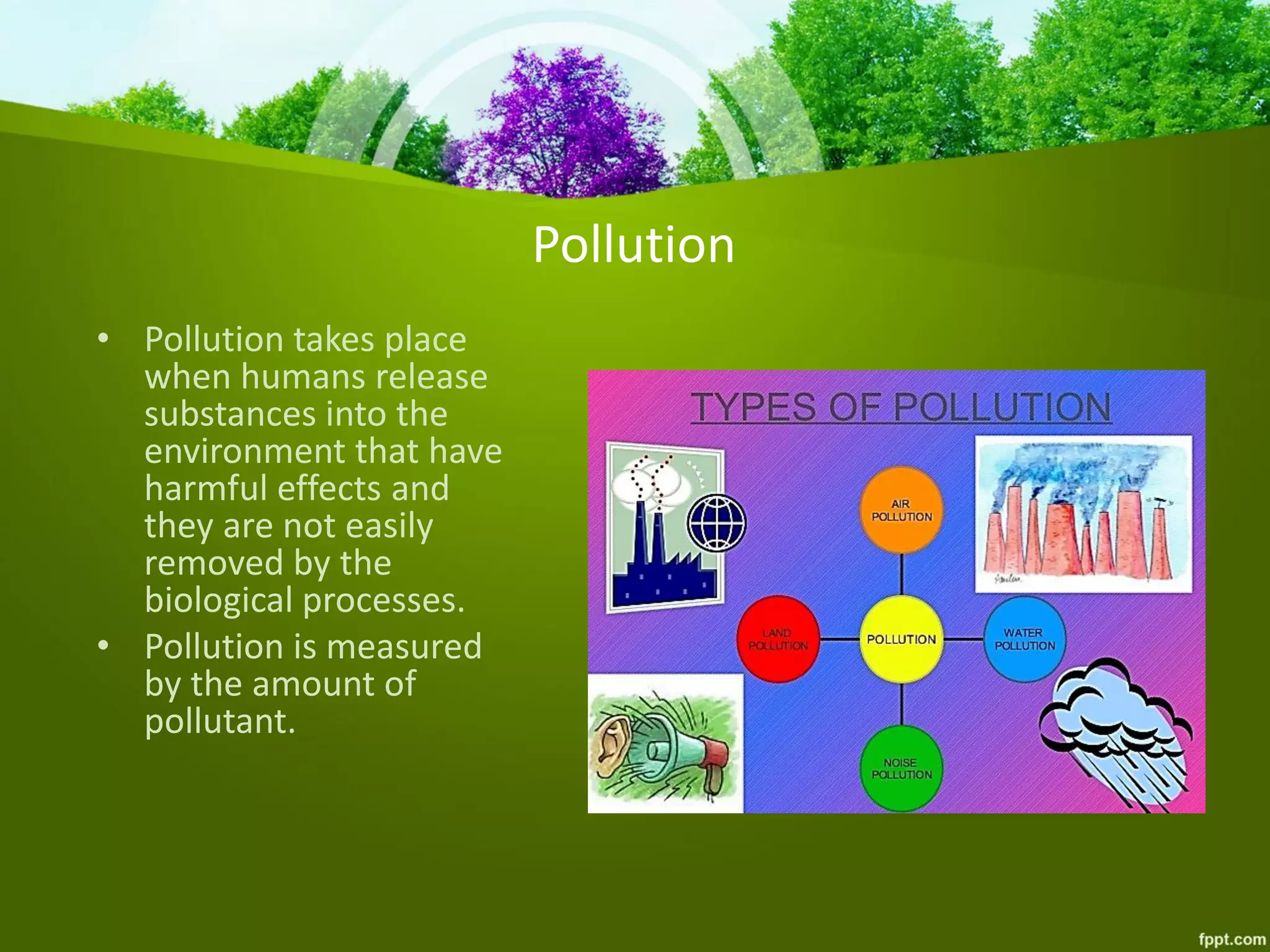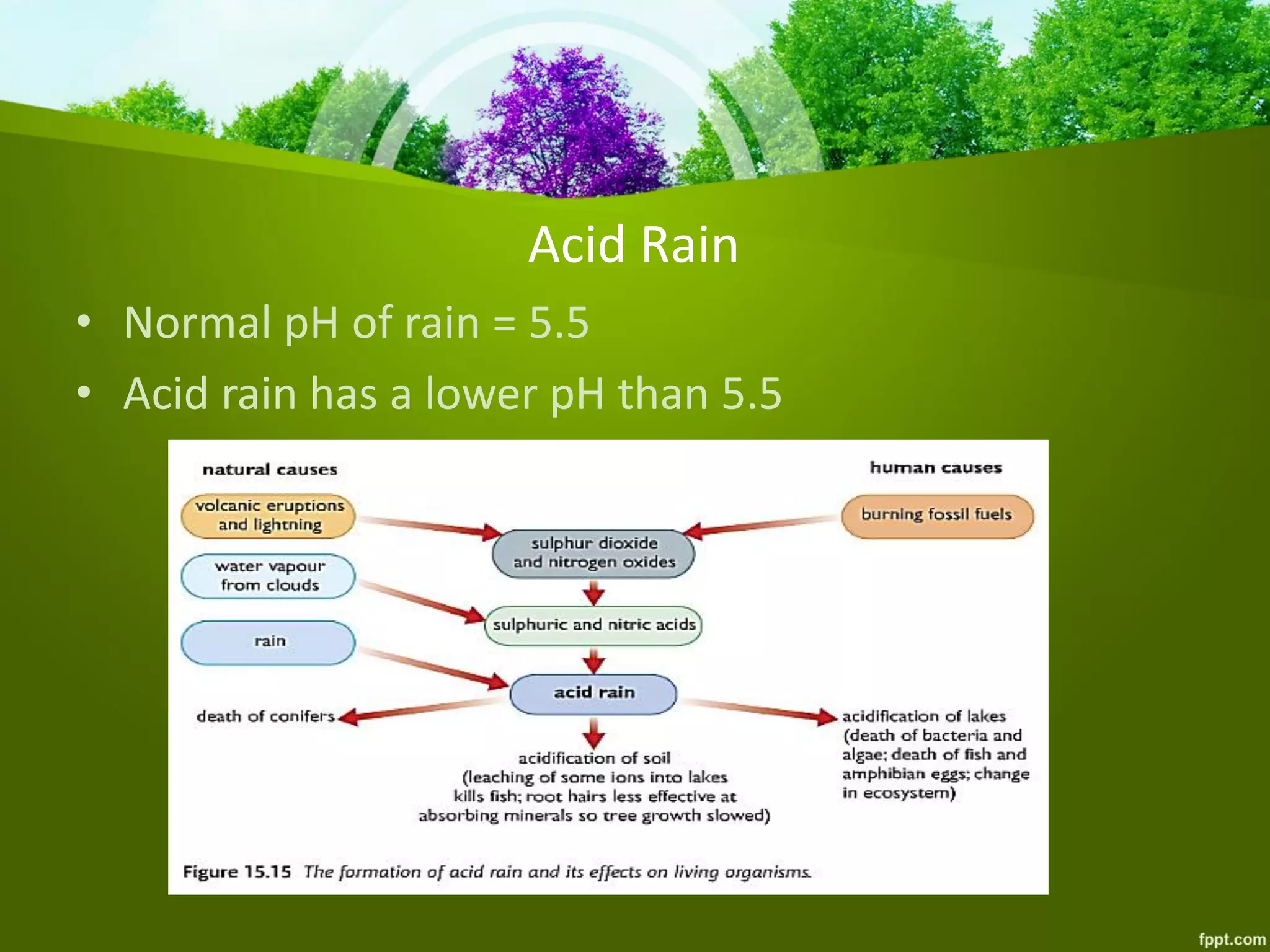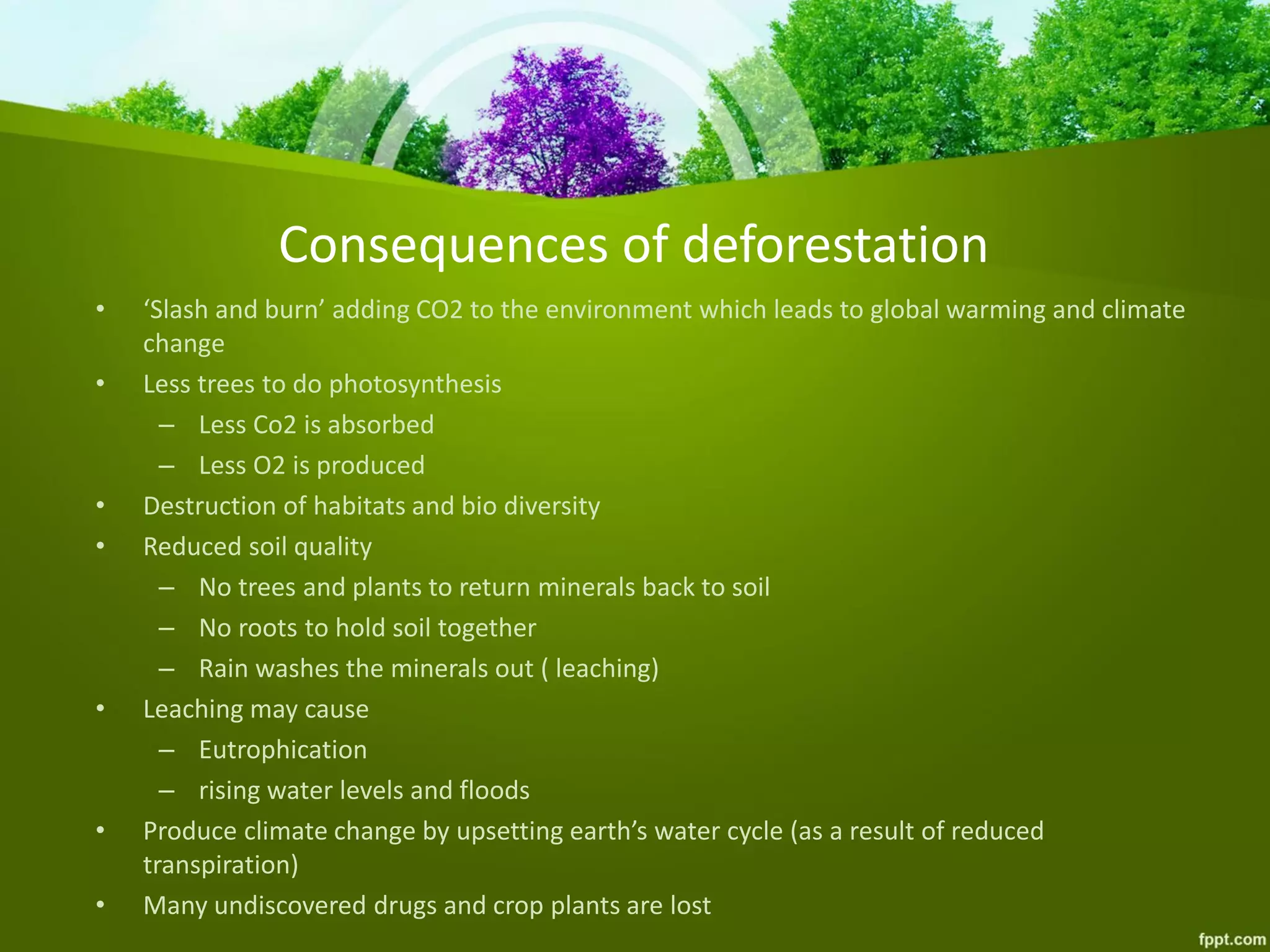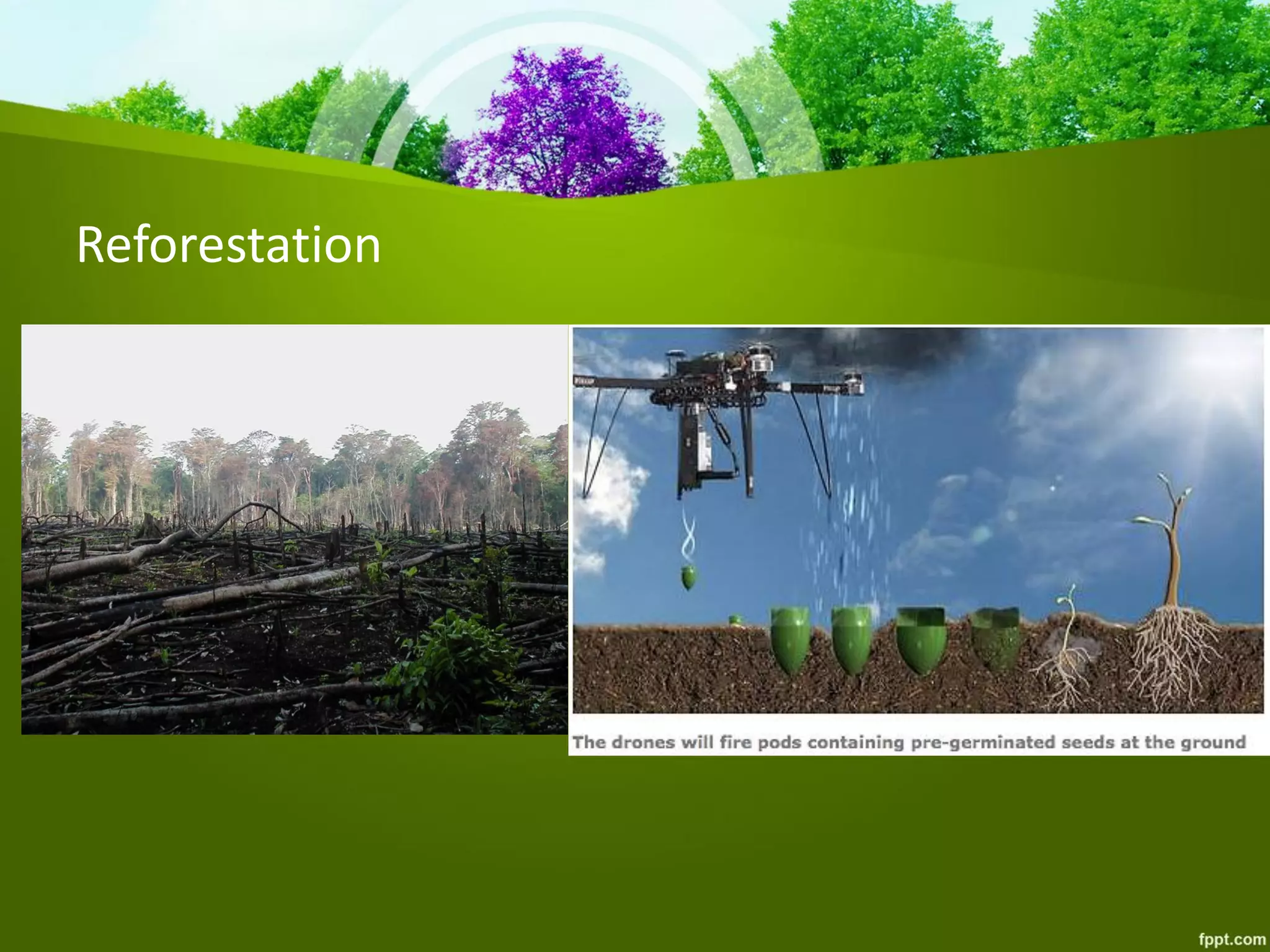This document discusses ecosystems and human influences on the environment. It defines ecosystems and their key components like producers, consumers, and decomposers. It explains photosynthesis and how plants convert glucose for storage, transport, and growth. Food chains and webs show feeding relationships between trophic levels in an ecosystem. Ecological pyramids represent these relationships. The document also covers human waste treatment like sewage systems and pit latrines. It discusses pollution issues like eutrophication from excess nutrients and air pollution from carbon emissions. Reforestation helps address problems caused by deforestation.
